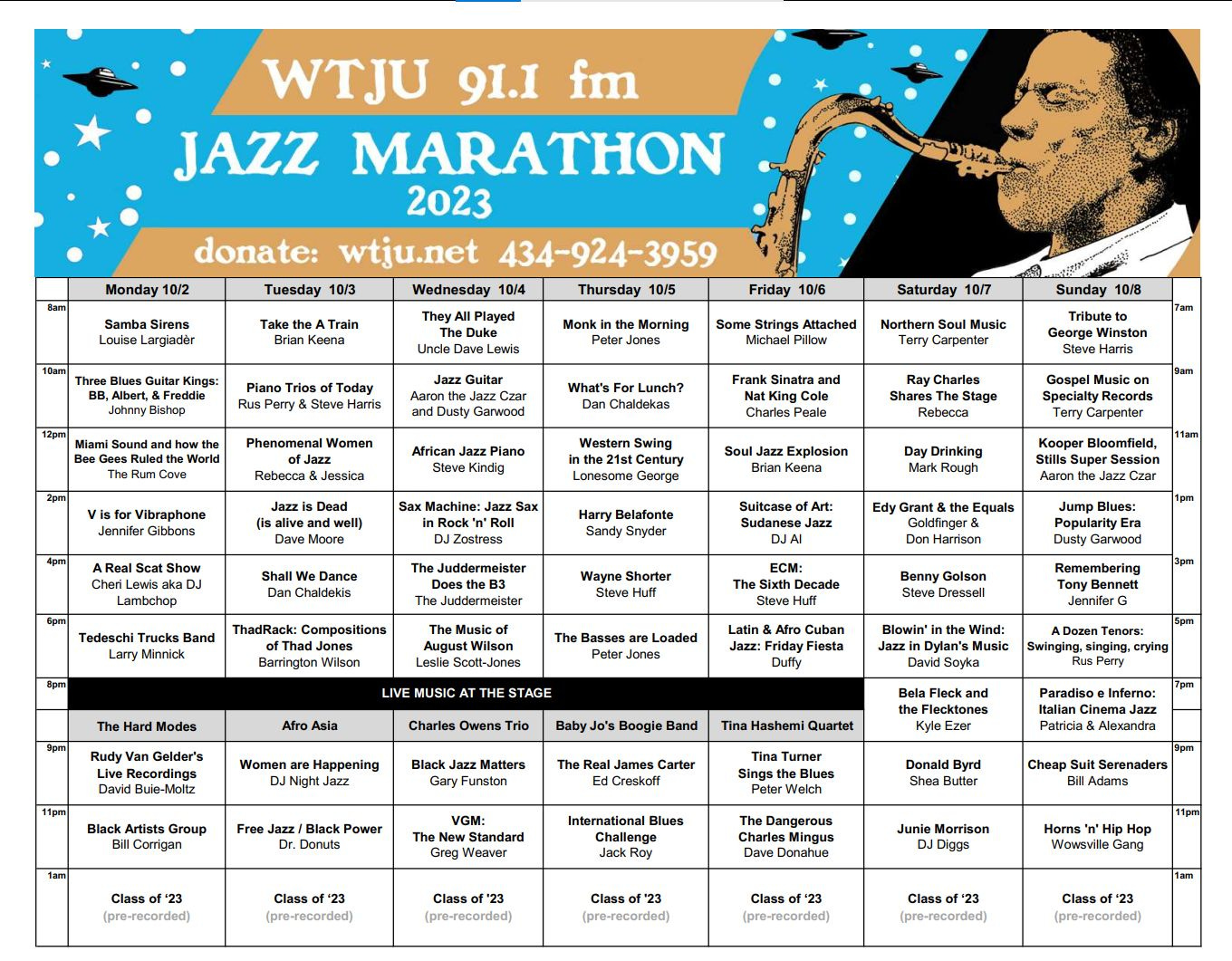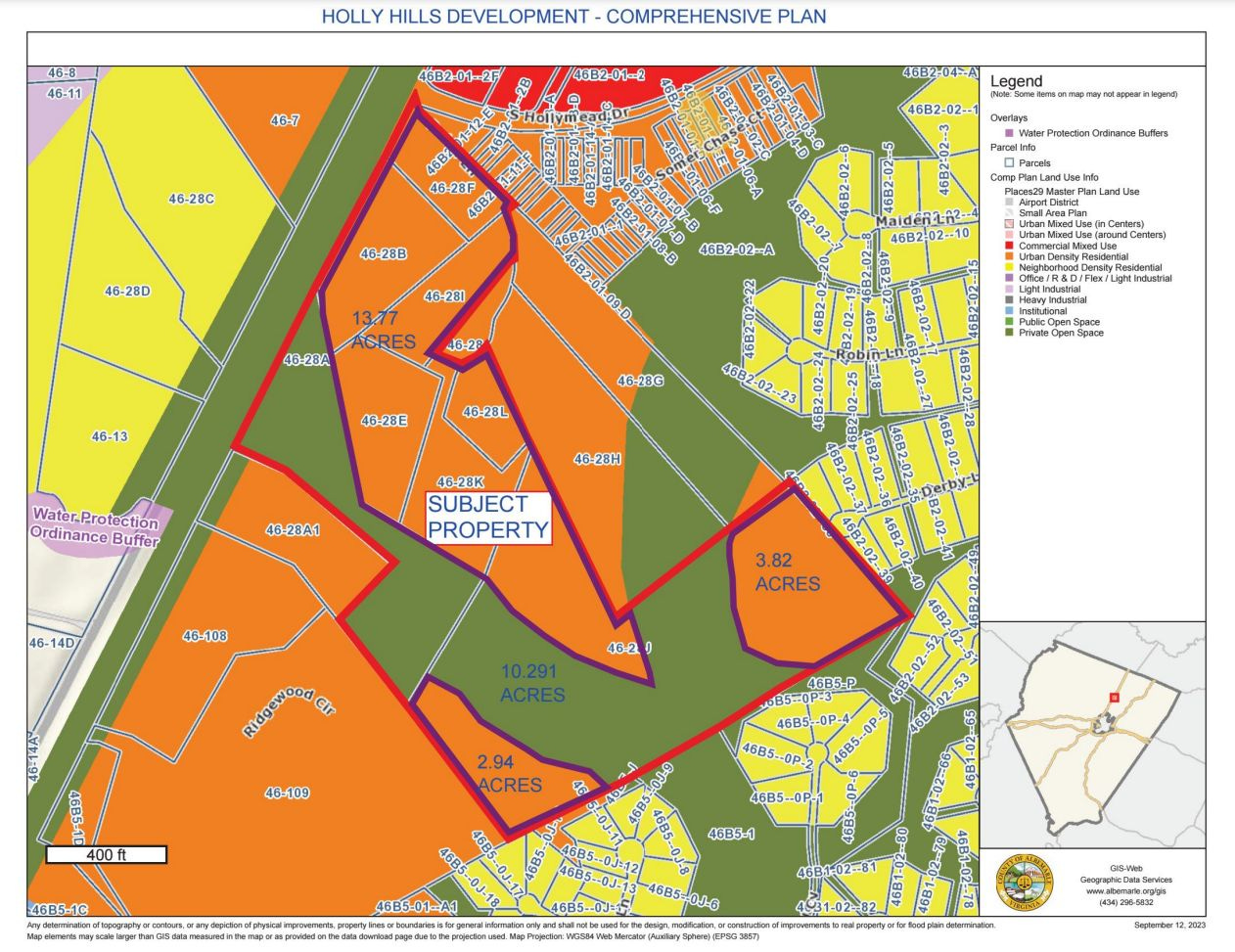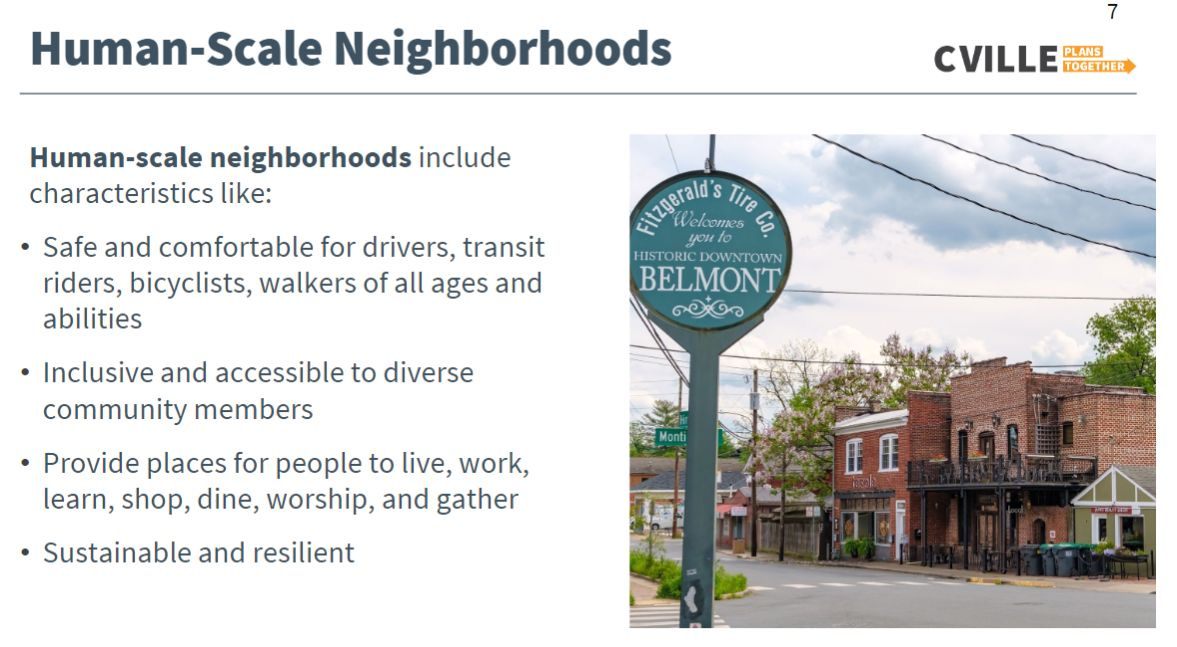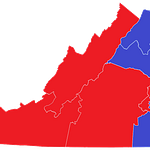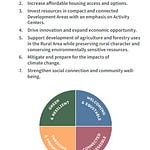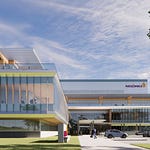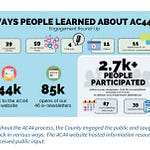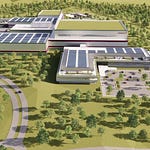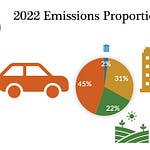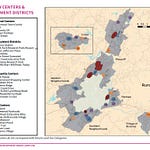Here’s a message for you to receive on this October 4. In the late 1930’s, the Association of Public-Safety Communications Officials-International created a system of Aural Brevity Codes to standardize radio communications between officers in the field. The usage of the word “ten” first gave enough time for early radio microphones to transmit a clear signal of the more important second number. These ten-codes were phased out in the 2000’s in favor of plain speech. 10-4? Somehow that’s relevant to Charlottesville Community Engagement. I’m Sean Tubbs, two syllables of pure brevity.
On today’s show:
Another round of rezoning applications have been made in Albemarle including a request for a 500 home development in Hollymead as well as an amendment to a previous rezoning just across the street
Charlottesville City Council holds the first of three work sessions on the city’s Development Code and discuss community design, the definition of house-sized, and commercial uses in residential neighborhoods
First shout-out: WTJU Jazz Marathon runs through October 8
In today’s second subscriber-supported shout-out: We are now in the middle of WTJU’s Jazz Marathon, a time when the airwaves carry a full week of round-the-clock jazz and blues specials. This is a great time to support the station with a donation to keep a platform for living and breathing jazz!
WTJU’s Jazz Marathon celebrates our local music scene every weeknight at 8 p.m. with five live jazz and blues performances and there’s three more left. They are the Charles Owens Trio tonight, Baby Jo’s Boogie Band on Thursday and the Tina Hashemi Quartet on Friday.
To learn more about what’s playing when, visit WTJU for a schedule and details about this event and to learn more about what your donation might yield.
Application filed for 500 more units on U.S. 29 near Hollymead
There’s planning and then there’s planning.
This afternoon, Albemarle County’s Community Development sent out a list of the latest round of applications for rezoning and special use permits. Comments for all of these are due back to each applicant by November 20.
In one, more homes are planned for the Hollymead area. Dominion Realty Partners and the Stony Point Development Group have filed a rezoning for eight parcels totalling 30.821 acres from Residential-1 to Planned Residential Development. The property for the Holly Hills neighborhood is located at the southeast corner of U.S. 29 and South Hollymead Drive.
“A maximum of 500 dwelling units is proposed, at a gross density of approximately 16 dwelling units/acre and a net density of approximately 24 dwelling units/acre,” reads the memo. “The dwelling units are proposed to be a mixture of single-family attached units and multi-family units.” (ZMA202300012)
The properties are designated as Urban Density Residential in the Comprehensive Plan.
The applicant’s narrative indicates that they’ve met with representatives from Forest Lakes and Hollymead and may change the application accordingly.
In another residential development across the street, Riverbend Development is working with the owners of a recently rezoned property on an amendment to change the allowed housing types. (ZMA202300014)
The RST Residences project was approved by the Board of Supervisors in September 2021 on a 5-1 vote.
“The concept plan layout for the Archer North application includes a portion of the previously zoned land and more specifically 13.2 acres of land, 222 proposed units with 15 percent of the total units as affordable,” reads the narrative. “Portions of the RST zoning on the eastern side of the property and adjacent to Forest Lakes will remain as zoned in ZMA202000007.”
At the first hearing before the Planning Commission, the Forest Lakes Neighborhood Association mounted significant opposition to the project during a public hearing conducted in the Zoom era if you want to go back and listen to how that went.
In two other items:
The owners of 4102 Dickerson Road seek a rezoning of 2.22 acres from Rural Areas to Light Industrial to allow for the construction of a 50 feet by 50 feet warehouse. (ZMA202300011)
Haley, Chisholm, and Morris Contractors seek a rezoning and special use permit for an existing storage yard on Earlysville Road to become compliant. (ZMA202300013)
Council poised to proceed with neighborhood commercial uses with permit
One might argue that this newsletter and podcast may be suffering from a decision to relentlessly go through as much of the deliberations that the Charlottesville Planning Commission and Charlottesville City Council have been having on the Development Code. I’ve made the choice to prioritize this work because I believe many people will be looking back at this time in the future no matter what happens. There’s been very little in-depth coverage and I’ve pledged to fill the gap as best I can. This is a publication about nuance.
Last night, Charlottesville City Council held their second deliberations on the code and there was no agenda made in advance. Their first meeting was on September 27.
“It’s just an opportunity for us to talk, really for the first time that we’ve ever had to talk about the zoning rewrite process,” said Charlottesville Mayor Lloyd Snook.
Snook said this meeting was a chance for the five Councilors to review material that the Planning Commission has been working on for years.
Council adopted the Affordable Housing Plan in March 2021 and the Comprehensive Plan in November 2022. Those are the first two of three components of the Cville Plans Together initiative which began in early 2020.
The Comprehensive Plan and its Future Land Use Map directed staff of both Charlottesville government and the firm Code Studio to draft a code that will significantly increase the amount of residential density. Snook said the first work session gave a chance to review some of Council’s expectations.
“In some ways, some of the basic assumptions that we thought we had going in two years ago I think in many years we’ve drawn back from and we have to revisit,” Snook said.
A night before Council took a step back, five of the six members of the Planning Commission focused in on the zoning with specific suggestions. That’s a topic in yesterday’s edition of the newsletter if you want to go back and read.
“They went through in some areas with great detail and great attention to detail in a way that I for one greatly appreciated because it is good to know that intelligent people are looking at it so carefully,” Snook said.
Snook added that the City Council will not be conducting as thorough a review. Instead they will hold three meetings in total to provide their feedback on what Neighborhood Development Services Director James Freas called “theory-level” issues.
“The intent of the proposed development code is intended to implement the Comprehensive Plan and the presentation and discussion this evening will focus on how the proposed zoning addresses the community design objectives of the Comprehensive Plan,” Freas said.
Freas said one of the main objectives of the Comprehensive Plan is to address racial equity in the city’s land use decisions by creating more places for people to live and to require that some new units be kept below market rate.
“So as is proposed today and as was proposed in the Comprehensive Plan and the land use map, we’re allowing small multifamily from three units up to eight units and townhouses to be basically built everywhere within the city,” Freas said.
Even more density would be intended in areas like schools, parks, and along transit lines.
“We’ve also opened up opportunities for a greater range of entrepreneurial activities so that starting a business doesn’t have to mean obtaining a separate location from one’s home,” Freas said.
Freas said the city would have a higher responsibility to regulate how this development would occur.
Christy Dodson with the firm Code Studio went through some of those planning goals in more detail. To kick off her presentation, she referenced a white paper on the concept of “zoning buffer” written in early 2022 by Shane Phillips of the University of California at Los Angeles’ Lewis Center for Regional Policy Studies. (read the paper)
“Essentially what it describes is looking at some research on the gap between a city’s population, the estimated zoning capacity, that’s really what they’re calling the zoning buffer, and the impact that has on affordability in the long-term,” Dodson said.
Dodson said one takeaway from the study is that modest up-zonings allow for wealth to be generated by existing property owners by keeping inventories lower.
“Whereas a broader community-wide approach this study found leads to better outcomes for housing affordability in the long-term,” Dodson said.
Dodson didn’t provide any examples and the white paper makes references to Los Angeles and Minneapolis.
Freas said if fewer areas are upzoned, there’s less competition.
“Whereas with a broader rezoning, if I’m a developer looking for a piece of property, I have choices,” Freas said.
Snook asked what cities are comparable in size to Charlottesville that have conducted a rezoning. Minneapolis is about 59 square miles compared to about ten square miles for Charlottesville. City Councilor Michael Payne had one example from the state of Washington.
“One example is Walla Walla,” Payne said. “They are about our population in size and they did something to our changes for [Residential-A] and [Residential-B] but they didn’t do anything equivalent to like our mixed-use commercial corridors but I think they’re about 40,000 people and less than ten square miles.”
The U.S. Census estimated a count of 34,060 on April 1, 2020 for the city of Walla Walla, which is also the county seat of Walla Walla. That city is 13.88 square miles according to Wikipedia.
The American Planning Association profiled that 2018 reform in an article last September if you want to learn more. (read the article)
Freas said upzonings are taking place more often at the state level in places like California, Montana, Vermont, and Oregon.
“A lot of the action has moved to the statewide level is really the answer there because of the politics because it’s seen as more readily doable as a political matter at the state wide level,” Freas said.
Let’s have a quick break before the rest of the newsletter.
Second shout-out: eBike Demo Day
In today’s second shout-out: Are you interested in a climate-friendly, family-friendly way to replace short car rides? Have you heard about eBikes? Wondering what kind might be right for you? Join Livable Cville on Sunday, October 8 from 2–4pm at Tonsler Park in Charlottesville for a fun afternoon with lots of eBikes owners you can talk to and several types of eBikes you can take for short test rides. Everyone is invited to their eBike Demo Day. Registration is recommended. To learn more, please visit livablecville.org.
Human scale, house size, and neighborhood commercial
Closer to home in Charlottesville, Dodson said there is a Comprehensive Plan strategy to zone at a human scale.
“Human scale neighborhoods, they have characteristics like they are comfortable and safe for a lot of different modes of travel so whether you’re driving, you’re riding transit, you’re taking a bike or other micro mobility,” Dodson said. “You’re walking. And really at any age or any ability. You have safe options for everybody. And it is inclusive and accessible to diverse community members and that’s diverse in every sense of the word.”
Dodson said that includes allowing spaces for people to do more than just live. These principles were applied to the Future Land Use Map. That’s why the draft zoning code and its use table allow for limited commercial space across the entire city.
“Retail, neighborhood restaurant, even office space, things like that,” Dodson said.
Dodson said this just brings back the way buildings were built until the mid-20th century. The draft code also puts a greater emphasis on the first few feet of a property to encourage streetscapes for pedestrians.
Snook noted that the city has intentionally not allowed commercial businesses in residential areas. He asked other Councilors if they were comfortable making the change.
“Definitely comfortable with it and more uncomfortable with having a zoning code that says the government is telling you it is absolutely illegal and there is no mechanism by which you could ever open a business and how we currently have it with a special use permit process I think will give us a little bit of an ability to kind of evaluate what that’s looking like in practice,” Payne said.
Councilor Brian Pinkston also supported the change philosophically.
“I would love for our city in 20 years to be the kind of place where those sorts of enterprises could flourish,” Pinkston said.
However, Pinkston said he could delay adding commercial uses for five years while the community gets used to all of the other elements of the new zoning code. He also said he would be comfortable restricting the size to less than 4,000 square feet and require that the commercial business owner lives on site.
Vice Mayor Juandiego Wade said he supported the idea of neighborhood stores but suggested some of the clientele might not be local.
“How do you keep that store from someone that is heading out of town that they want to swing by there to get something?” Wade asked. “How do you handle that parking?”
In the draft code, you would need a special use permit for most neighborhood commercial. Both Wade and Payne said they would want to proceed that way in this rezoning.
Snook said he is concerned about the special use permit process because of the amount of the time they would take.
“If you’re talking about some refugee family wanting to create a restaurant on their first floor, that ain’t going to happen,” Snook said. “It’s not going to happen with a special use permit.”
Snook also repeated a concern he’s expressed before about how the city would ration the permits to prevent residential neighborhoods from being converted fully to commercial. A concern is that denials by Council might be subjected to legal challenges. Council discussed that additional traffic could be used as a reason to deny if public health and safety concerns were raised.
Councilor Leah Puryear said enabling the special use permit process for neighborhood commercial would allow for would-be business owners to do their due diligence.
“It allows people to make a decision,” Puryear said. “If I wanted to convert my basement to be the neighborhood bakery… and if I wanted to do that, I would have the opportunity to think it through and do what I need to do as it related to the business plan, and this, that, and a third.”
Pinkston asked fellow Councilors if they have a concern with allowing lodging in Residential-B and Residential-C. This is separate from homestay uses and would be more like bed and breakfasts or inns.
“I personally have no philosophical problems with that but I will say that if we’re trying to create more housing for people to live in, I wonder if that cuts against it in some way,” Pinkston said. “But maybe the market will sort that out for us. I don’t know.”
Payne said he is concerned about that use taking up existing housing stock. Snook said it’s a concern in the current market. A consensus was reached to not move forward with that use at this time.
After Dodson’s presentation, Vice Mayor Juandiego Wade said he has received from many concerned that the city’s infrastructure will not be able to support such a large upzoning.
“I just want to know about the pace of the infrastructure because I know that we can require some improvements, I just want to know how that’s going to work,” Wade said.
Freas said there was a memo that would explain further and that the city doesn’t expect a huge building boom.
“The rate of change we are anticipating is incremental over time,” Freas said. “I want to emphasize that the zoning code is not a development plan. It’s a body of regulations.”
Freas said the city is working to improve its transportation system and the water and sewer infrastructure. He said site plan review of individual projects will measure capacity but also will require developers to build part of the future.
“Built into the zoning ordinance is a requirement that you upgrade your streetscape when you add in a new building so that we’re ensuring that everything we’ve done to require that building to be community-oriented and contributing towards walkability and pedestrian safety carries over into the street in front of it,” Freas said.
Council also discussed requirements for transitions between different zoning districts. At another point they talked about the notion that buildings in Residential-A and Residential-B districts would be house-scaled or house-sized Snook said he felt what could be permitted might not be consistent with that word.
“It seems to me that we could easily have six units of apartments and if each one is going to be 1,500 square feet, we have a 9,000 square foot building and as I look at the various other constraints, lot sizes and coverages and so on that all seems to me to be entirely possible, did we give up on the idea of house-sized buildings in [Residential-A]?” Snook asked.
Snook referenced an abandoned building on Booker Street in the Rose Hill neighborhood that was built in the mid-2010’s had over three levels with at least 2,000 square feet each. Developer Richard Spurzem sought a rezoning to bring the building into compliance with the zoning code in July 2016 as you can read in this uncategorized story on Charlottesville Tomorrow. The zoning was denied.
“It’s an eyesore,” Puryear said.
“It’s an eyesore and it’s the example people use of ‘I don’t want that in my neighborhood,’” Snook said.
Payne stated that in the draft development code, R-A would only allow two and a half stories. He said the word house-scale is subjective.
“So when I look at these heights and widths, to me it completely matches the neighborhood human house scale in terms of the existing pattern with the neighborhoods of some townhomes, smaller apartment complexes that are mixed in with homes,” Payne said. “And I can think of areas in my neighborhood where I live every day as well as canvassing throughout the city where that pattern of development is isolated but it exists and I walk by it and it feels completely house-scaled.”
The Future Land Use Map used the phrase “house-sized” to refer to structures that could be built in the General Residential and Medium-Intensity Residential areas. Freas gave his interpretation.
“My understanding of the house-scaled statement was house-scale from the street as viewed from the public realm and that new infill development fits in with the streetscape with the image of what we’ve seen,” Freas said. “I think necessarily in order to accommodate a certain number of units, you’re going to go back into the lot but what we’ve focused on a lot is controlling that scale as the neighborhood presents and unfolds to the person on the street.”
Councilors debated different positions and scenarios. Wade said he supported the residential density to address the need for deeply affordable housing as well as those for slightly higher incomes.
“Leah and I can attest after being on the School Board for 16 years that there is a lack of that middle income, that missing middle that we’ve talked about and teachers cannot afford and that’s what I see in [Residential-B] and [Residential-C],” Wade said. “We need that as well so we need this housing types and quantity in all parts of the city because I think in the past its only been in certain ones as I think we want to kind of spread the love.”
Wade said design will be a large part of how successful the future built environment will be, but Snook said the city will have no power to mandate that design.
“Who was it who said that we have to remember that the heart of a developer is mean and nasty, and if that’s what we’re dealing with, let’s not assume all kinds of benign thoughts,” Snook said.
Pinkston said there would be standards to keep developers in check.
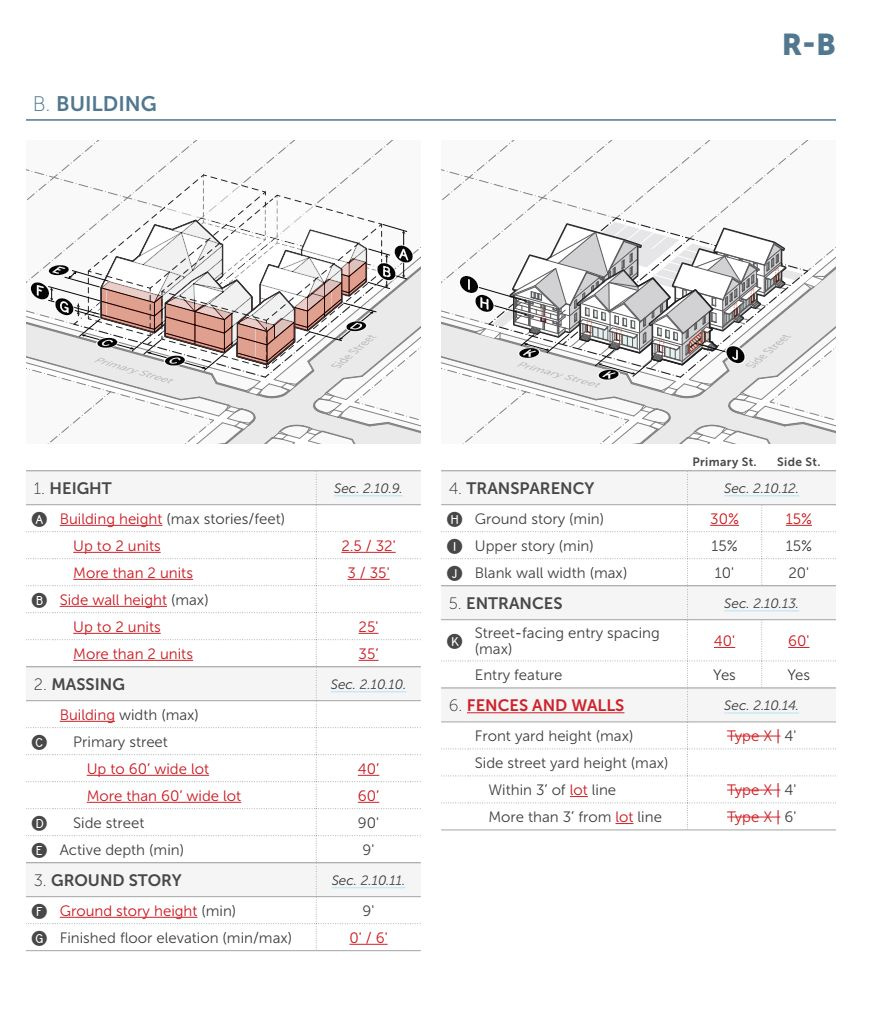
Council’s second meeting from October 3 is on anti-displacement efforts. I’ll have that in a future edition of Charlottesville Community Engagement. The final meeting will be on population estimates and the housing market.
Freas said the Commission is expected to make their formal recommendation and a list of changes by October 10.
“We are not at that time doing to do a full redraft of the document,” Freas said. “At that point we will be in this meeting process and in subsequent meetings. What I imagine is that part of our conversation with the Council may lead to additional changes or modifications which we will then get to a point of doing a full draft at that point in time when we’re ready to advertise for a public hearing.”
There’s more to come and I’ll attempt to cover as much of it as I can even if it is holding up coverage of other events.
Reading material:
Virginia election officials acknowledge voters mistakenly removed from rolls, Ben Paviour, VPM, October 3, 2023
Concluding thoughts for #585
This edition of the newsletter comes out later in the afternoon than usual, but I’m attempting to power through with these summaries as I think they’re worth having for people to know what happened. Council will approve minutes that will likely be very short summaries. If I had an organization behind me, these would be posted the day after by a dedicated team.
Alas for now it’s just me here at Town Crier Productions, fueled by your paid subscriptions. I’m fast approaching 2,500 total subscribers, and for those who are new, the goal is to write about things other than zoning but there’s a gap in the market I am currently filling.
With time I’ll build that organization and you can help with your paid subscription. I am hopeful to hire someone soon to assist with editorial work, and stay tuned!
The Internet company Ting will match your first payment.
Ting sponsors Scott Stadium, the Ting Pavilion, and the John Paul Jones Arena. Maybe you’re in the market for a new high speed internet provider?
If you’re in Charlottesville, check out Ting! If you sign up for Ting at this link and enter the promo code COMMUNITY, you’ll get:
Free installation
A second month for free
A $75 gift card to the Downtown Mall



